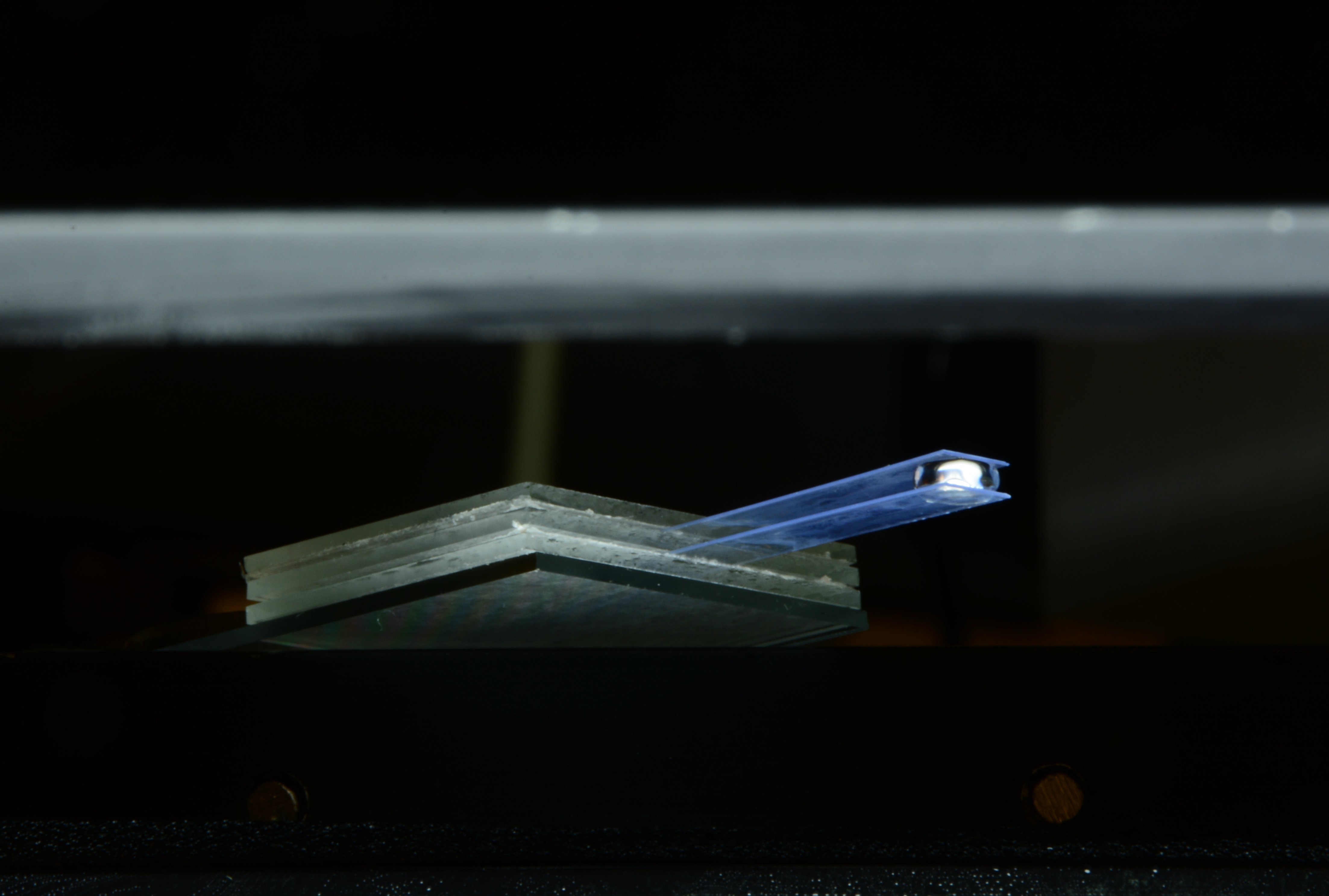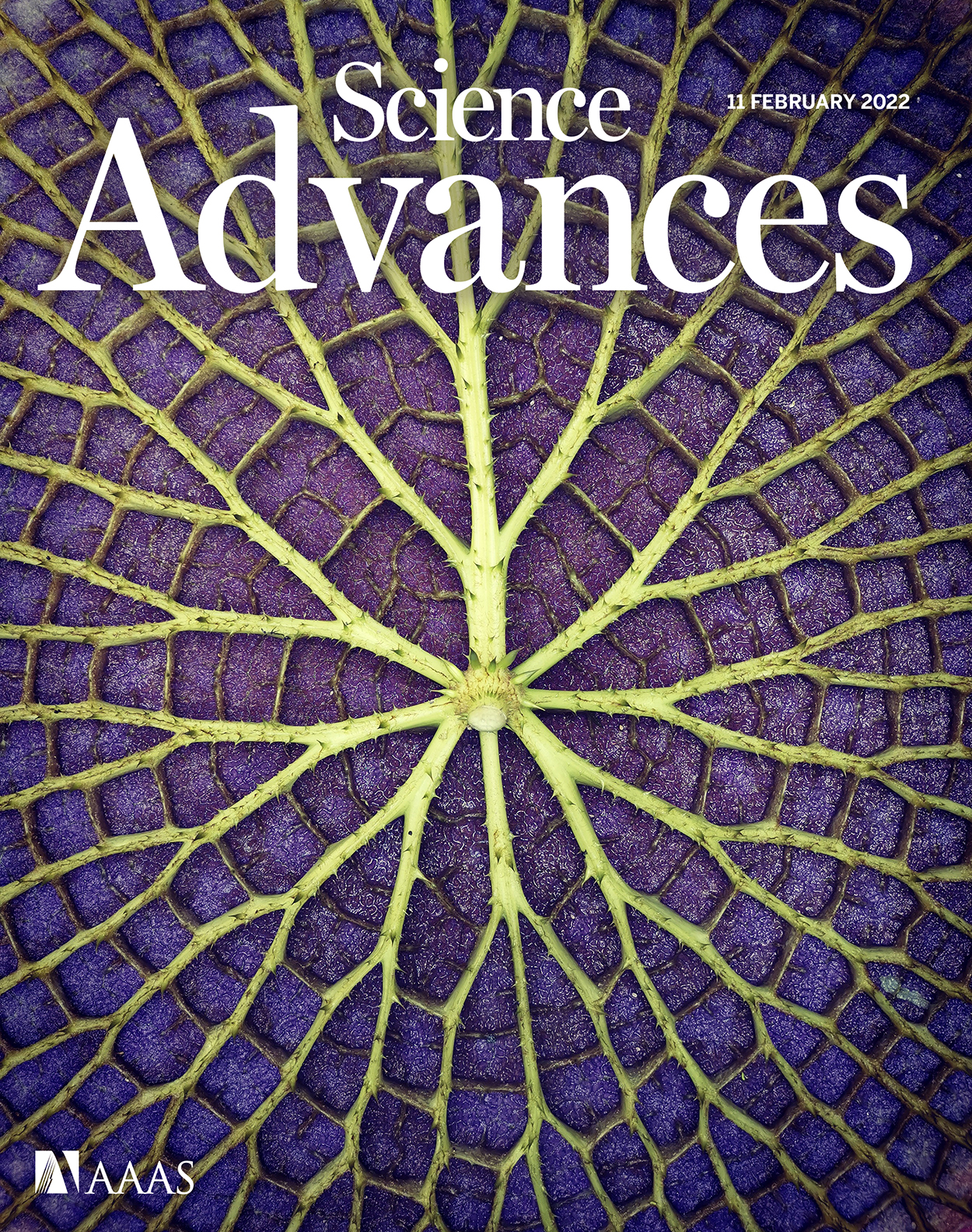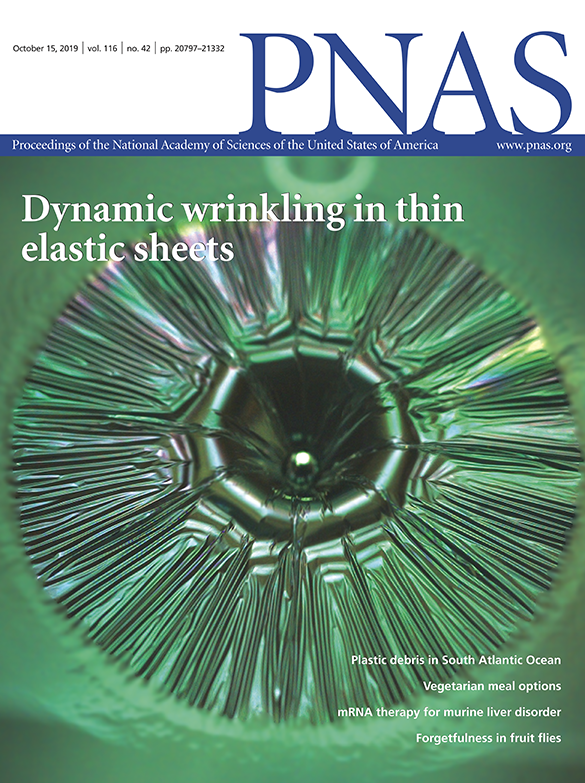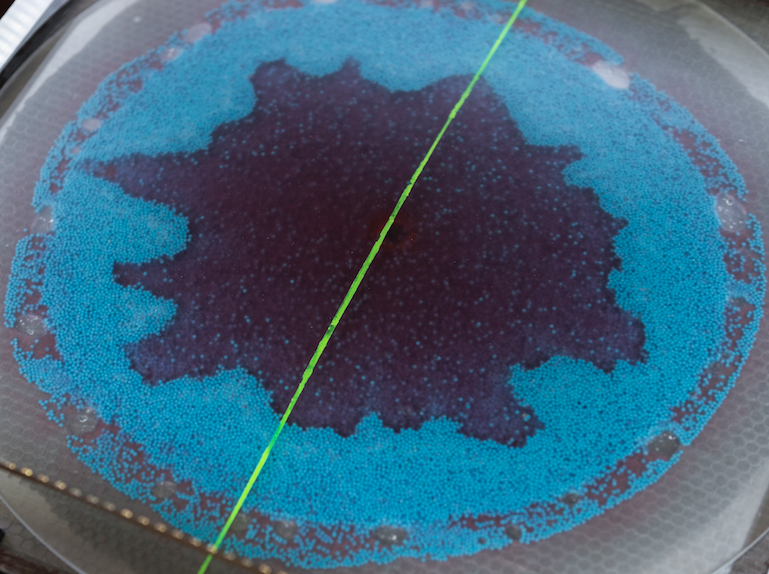PhD opportunity on Flexible Microfluidics open now!
A PhD studentship is available for a budding scientist to study explore how fluid-structure interactions can be harnessed for passive control of fluids,
cargos and channel geometry in micro-scale fluidic devices.
This experimentally focused PhD project will involve the integration of soft, deformable components into microfluidic devices
and the visualisation and measurement of concurrent fluid flows and solid deformations in confined environments.
The purpose of this PhD is to provide fundamental knowledge into passive propulsion and shape-morphing strategies
that can improve deployment of microfluidic technology outside of the laboratory environment.
Find out how to apply here or get in touch to discuss the project further.
Biogirders on the front cover of Science Advances
Our study on the mechanical properties of the giant Amazonian waterlily
APS Gallery of Fluid Motion.
We measured the effective stiffness of floating waterlilies and attributed the superior mechanical strength of the giant Amazonian waterlily
to the prominent network of veins that decorate the underside of the waterlily leaf.
The branching veins increase the apparent thickness of the leaf, enhancing the effective bending stiffness of the leaf at an economical material cost
(i.e. for a given amount of plant matter).
This work was featured in National Geographic.
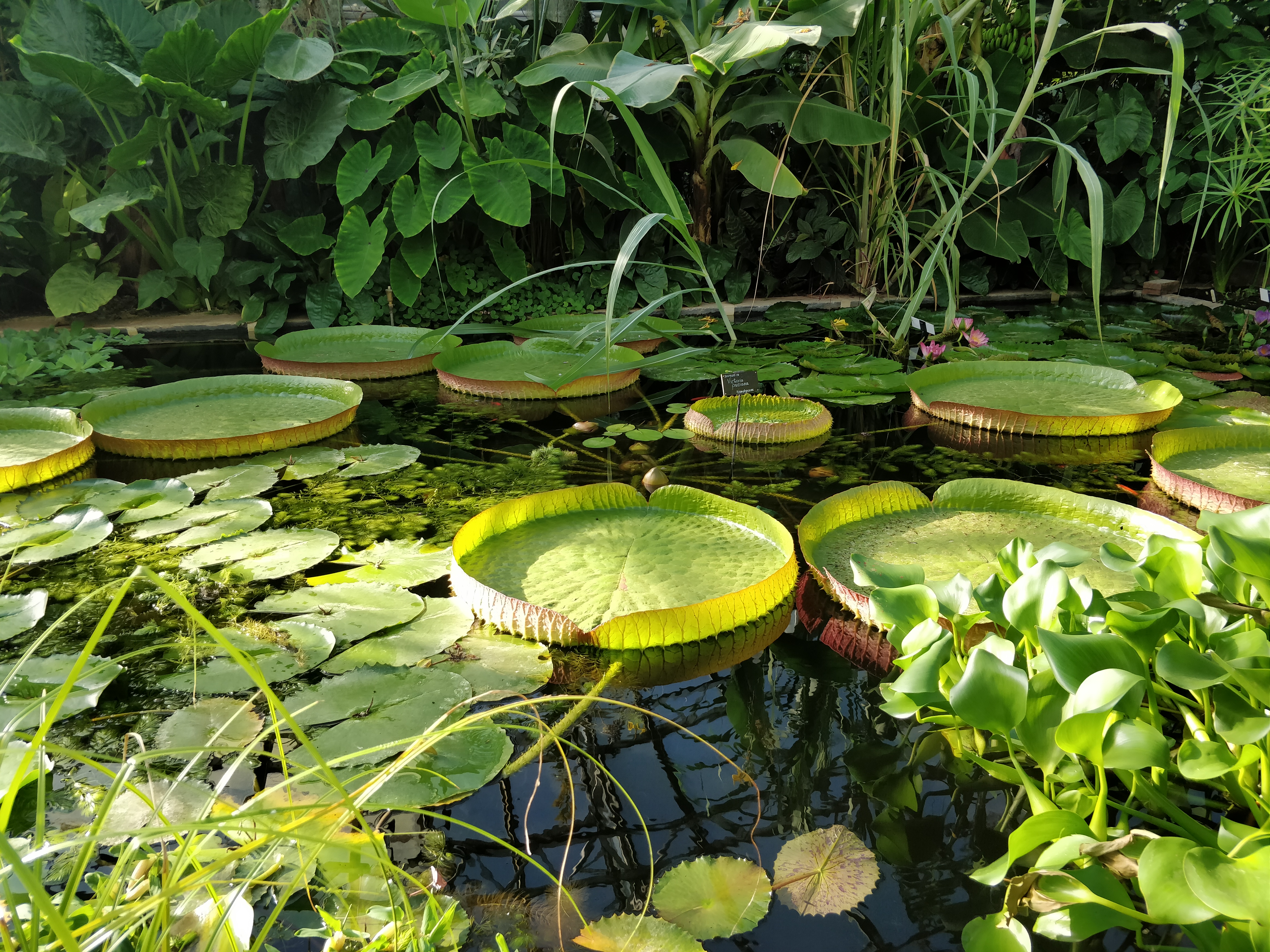
The fast & the flexible on the front cover of PRL
Our work on the dynamic buckling of slender structures induced by the bursting of a soap film has featured on the
APS Gallery of Fluid Motion.
Elastic bands were floated on a soap film. Initially, the elastic bands were held in equilibrium, with soap film imparting a surface tension on both
the inside and the outside of the band.
After bursting the outer soap film, only the surface tension of the inner soap film remains, pulling inwards, causing the elastic ring to collapse via buckling... You can
read a feature on FYFD or watch the video below.
Poking a coating features on the front cover of Soft Matter
Our study of cloaking effect a thin, stiff coating provides to a soft substrate (and the implications for ripeness testing!) has featured on the front cover of Soft Matter.
Read all about it here.
Dynamic wrinkling features on the front cover of PNAS
An image from our study of the dynamic wrinkling of floating, elastic sheets has been used on the front cover of
Proceeedings of the National Academy of Sciences of the United States of America.
Dropping steel balls onto thin floating sheets of elastic results in a striking wrinkle pattern. We found that the distance between neighbouring wrinkles evolves in time
(equivalently, the number of wrinkles decreased in time) in stark contrast to previous observations in both static indentation experiments and previous dynamic impact experiments.
Our demonstration of wrinkle coarsening suggests that an evolving substrate stiffness (i.e. fluid inertia) may provide a means of breaking away from the single,
static wavelength that is selected by material properties alone, opening the route towards dynamic tuning of wrinkle-patterned topographies.
This novel route for wrinkle formation may prove to be a useful fabrication technique in a range of engineering applications that require regular, patterned topographies.
Read all about it here.
Bendotaxis featured in Nature Highlights
Our work on Bendotaxis - a passive self-propulsion mechanism for droplet transport in flexible channels -
has been featured in Nature Highlights
and APS Physics.
We demonstrated that droplets self-eject from flexible channels because the bending of the channel walls generates a pressure gradient
that drives the droplet in a direction that is independent of the wetting properties of the fluid.
The universality of motion means that Bendotaxis may find application in self-cleaning surfaces,
and may also be responsible for preventing the hairy legs of water striders from getting wet.
Winner - UK Fluid Network Video Competition, 2018
Our video of the dynamic wrinkling of ultra-thin elastic sheets won the 2nd video competition of the UK Fluids Network.
Click here to see the whole video. In the video, a sphere impacts the centre of a floating sheet.
Hundreds of fine wrinkles form almost instantaneously in the sheet, and then coarsen in time - a process controlled by the inertia of the fluid below.
A ripple also propagates radially away from the point of impact, but at a rate different to that of the capillary wave generated when a stone dropped into a pond.
More details coming soon...
Winner - Institute of Physics Nonlinear and Complex Physics Group Photo Competition, 2016
This image won a picture competition associated with the launch of a new website for the IOP Nonlinear and Complex Physics Group.
The image is concerned with transition to turbulence in the flow along a pipe, which is considered to be one of the greatest challenges of classical Physics.
Theory predicts that the flow should be smooth and laminar for all flow rates. However, the most common flow in practice is rough and turbulent.
The image illustrates the transition process where dye lines show the complex structures that exist between laminar and turbulent flows.
The image was taken whilst conducting a PhD at the Manchester Centre for Nonlinear Dynamics.
Cover Image for the BP Institute for Multiphase Flow 15th Anniversary Brochure, 2016
This image was used on the cover of the brochure Research at the BP Institute for Multiphase Flow celebrating the 15th anniversary of the BP Institute in 2016.
The image shows an experiment I developed to investigate the influence that particles included in drilling fluid have on the propagation of fractures during drilling operations in oil and gas exploration.
When a well is drilled through an under-pressurised sedimentary layer, a fracture may propagate out from the well, resulting in the loss of drilling fluid.
To suppress this phenomenon, particles are pumped in with the drilling fluid filling the fracture. In the image shown here, a mixture of fluid and particles was injected in between an elastic sheet and a horizontal, permeable substrate.
The injected fluid spread outwards radially, deforming the overlying elastic sheet, and simultaneously draining through the substrate.
Particles suspended in the injection fluid accumulated on the permeable plate owing to the drainage flow, and inhibited the draining of fluid through the substrate.
This research is presently being developed to inform drilling protocols.
